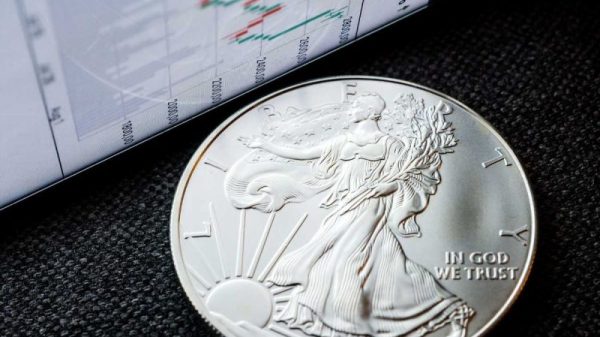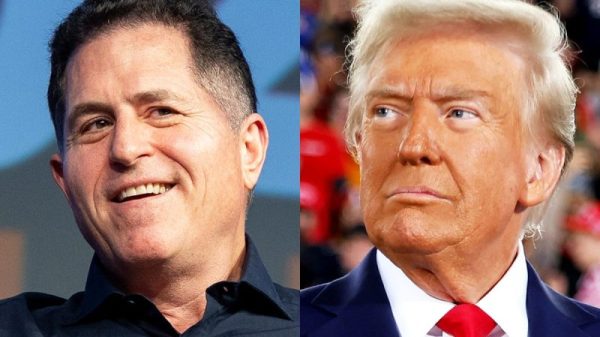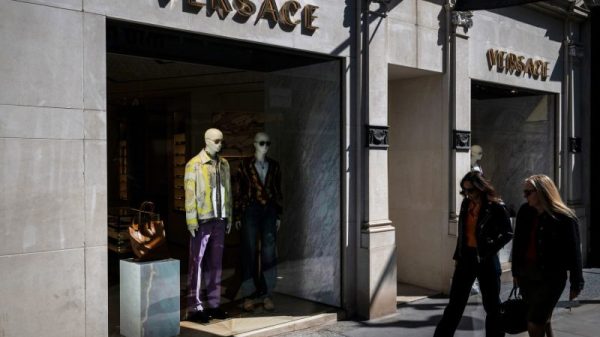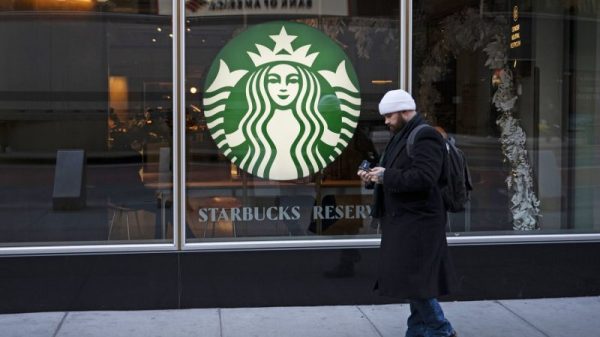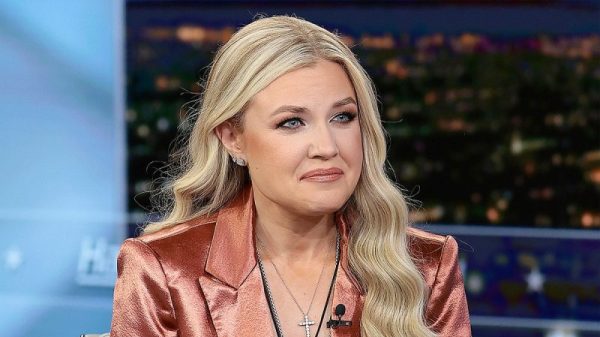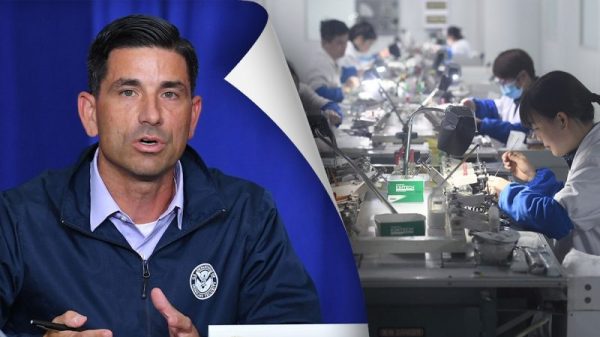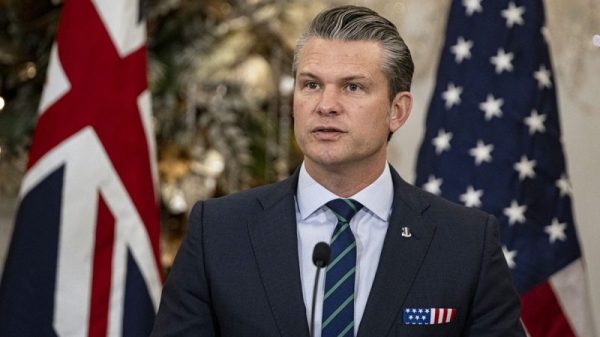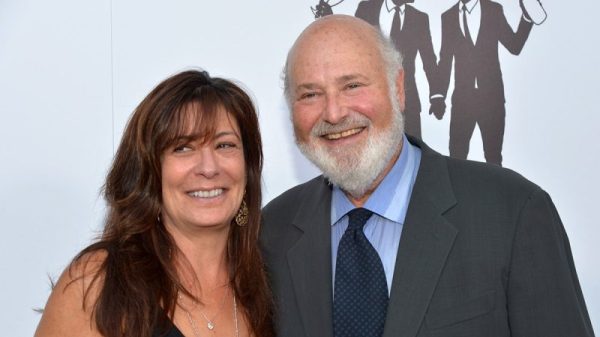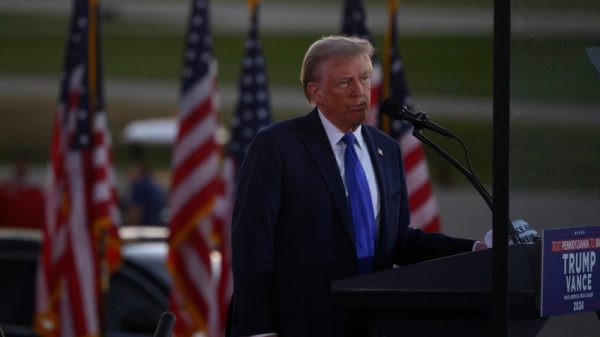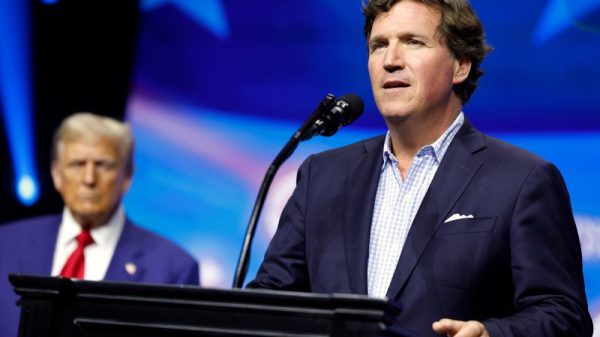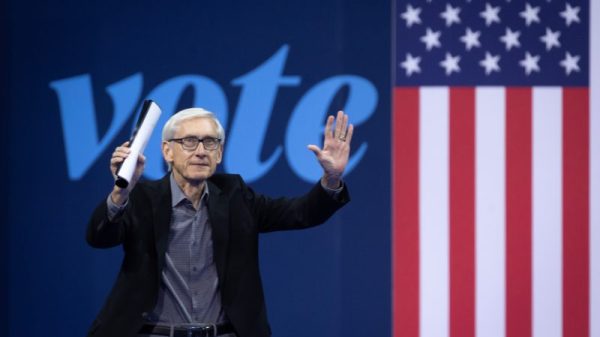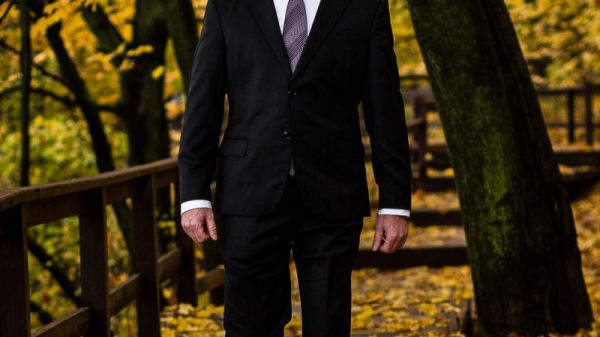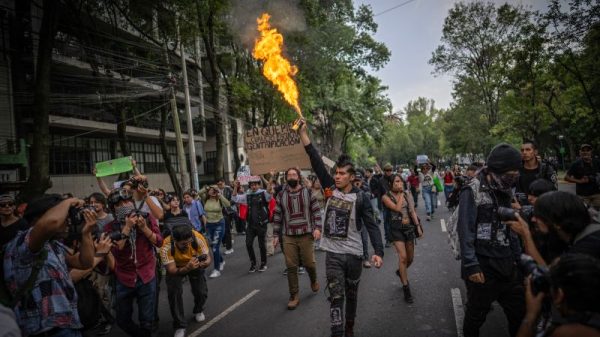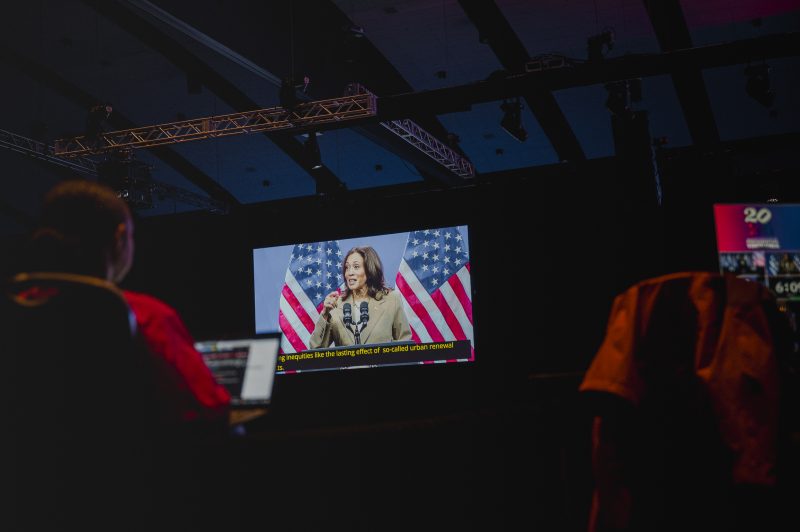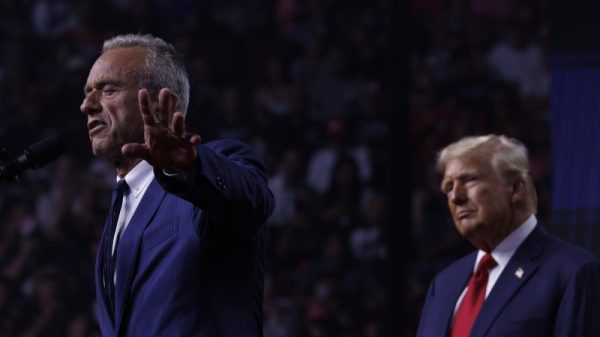Jaleel Stallings was just letting his dogs out and giving them breakfast a few days ago when he got a message from his lawyer telling him Donald Trump’s campaign was targeting him online.
“Here we go again,” he recalled thinking.
Four years ago, Stallings and a group of friends joined protests in Minneapolis over the police murder of George Floyd. A SWAT team in an unmarked van fired a nonlethal projectile that hit Stallings in the chest, and Stallings, an Army veteran, returned fire from a legally permitted pistol. Officers beat him, breaking his eye socket, and gave accounts of the encounter that were inconsistent with video recordings. He was eventually acquitted of attempted murder of an officer and received a $1.5 million civil rights settlement from the city, while the officer who beat him pleaded guilty to assault — but not before Stallings was vilified online.
Now, that stigma resurfaced in a post from an official Trump campaign account on the social media account X, which shows a mug shot of Stallings, who is Black, alongside a photo of Harris, who is Black and Indian American. The campaign accused Harris of raising “money to bail Stallings out of jail” because she promoted a bail fund that helped him. The post failed to mention that Stallings was acquitted.
“The willingness to lie and use smear tactics to drum up political support by a potential president is not becoming of what this country represents,” Stallings said in an interview. “I’m a person who chooses to believe and keep hoping we can truly strive to be what we say America is.”
The campaign’s post about Stallings was one in a string of six similar messages that misleadingly accused Harris of helping to free people the Trump campaign described as dangerous criminals. What ties Harris to their cases is a tweet she sent in June 2020, when she was a senator, before becoming Joe Biden’s running mate, that encouraged people to donate to a bail fund benefiting participants in the George Floyd protests. Some of the cases the Trump campaign highlighted resulted in convictions and guilty pleas, including a charge of unintentional murder, and others in dismissals.
Trump’s attitude toward Black Americans came under renewed criticism this week after he berated a Black reporter who pressed him about past racist comments. Trump also baselessly accused Harris of downplaying her Black heritage. Harris responded that Americans “deserve better.”
Stallings said he wants Trump campaign officials to correct the post and invited them to join a discussion with his nonprofit, which tries to improve police culture and community relations. The Trump campaign did not respond to that invitation.
Trump’s campaign defended its posts and followed up on Saturday before a rally the former president held in Minnesota with a digital video that featured several of the same cases, but not Stallings’s. “Kamala and the mainstream media can try to rewrite history, but President Trump will make sure Minnesotans and all Americans know the truth,” Trump campaign spokeswoman Karoline Leavitt said. “Harris is a pro-criminal extremist.”
The posts were part of a broader strategy widely viewed by scholars and other experts as playing on old racist tropes and exploiting stereotypes about crime and people of color. The posts from the Trump campaign mainly featured Black people alongside photos of Harris, laughing.
Bennett Capers, a law professor at Fordham University who studies race and policing, described the Trump campaign’s tactic as: “Put up a photo of a scary Black man and it will rally your fearful base.” He added: “You have not just the Black defendant but you have him next to the Black woman, painting both with the same brush, even though the brush is inaccurate.”
The organization that Harris promoted in her 2020 tweet, the Minnesota Freedom Fund, provides money to meet bail amounts that judges set as an assurance that criminal defendants will attend future court dates. Judges decide whether defendants are safe for release. The fund has spent $21.4 million on bail for 3,133 people since it was founded in 2016.
The group posted 128 protest-related bails since Floyd’s murder, including 31 in the first six months, according to the fund’s communications director, Noble Frank. The fund received an influx of support in the summer of 2020 — contributions surged to $41.7 million that year, from $231,000 in 2019, according to tax records — but Frank said it would be impossible to distinguish how much was attributable to Harris vs. any of the other high-profile figures who also promoted the fund at that time, such as actors Cynthia Nixon and Seth Rogen.
Frank said that the Trump campaign disproportionately focused on people of color: The string of posts featured five Black people and one Native American. The fund’s clients are 24 percent White.
Out of all the fund’s clients, 37 percent went on to have their charges dismissed, while 28 percent pleaded guilty and 31 percent remain unresolved. Mischaracterizing these defendants as criminals undercuts the constitutional principle of innocent until proven guilty, Frank said.
“The vast majority of our clients are people who are successful after their release and move on with their lives,” Frank added. “We do not and cannot work outside of the existing system. We work within it and by its own rules, in an attempt to level the playing field that is heavily tilted depending on a defendant’s race and income.”
Harris campaign spokesman Ammar Moussa defended Harris against the attacks, saying they amount to a “desperate lie from a desperate campaign that can’t change the facts.”
Crime has been a point of contention in recent elections, with Republicans up and down the ballot accusing Democrats of being soft on the issue and in some cases using sensational imagery and messaging criticized as tools for stoking racial tensions. GOP candidates and strategists have denied accusations of racism, while Democrats have highlighted Trump’s status as a felon and his calls to pardon Jan. 6 defendants as arguments that he is no steward of law and order.
The political tactic of dramatizing crimes by Black people was epitomized by an infamous attack ad from 1988. An outside group supporting Republican George H.W. Bush accused his Democratic opponent, Massachusetts governor Michael Dukakis, of being weak on crime by spotlighting a prisoner in that state named William Horton who raped a White woman and stabbed her boyfriend while out of prison on a furlough program.
The ad prominently featured Horton’s mug shot. Bush distanced himself from the ad, even as his campaign strategist said he would attack Dukakis by making “Willie Horton his running mate.”
“For all the dirty politics the Bush campaign was willing to engage in, it did not want its fingerprints directly on the Willie Horton ad because they thought they were crossing a racial line,” said Kevin Kruse, a Princeton University history professor who researches the civil rights movement and modern conservatism. “The harm they cause is reducing complicated issues of crime and criminal prosecutions down to individual cases that are meant to stand in for a whole but often don’t.”
Other bail fund cases spotlighted in the Trump campaign’s posts also contained misleading information, in addition to overstating Harris’s connection to them.
In October 2020, the fund paid bail for a man named Christopher Boswell, and those charges against him were dismissed. The Trump campaign posted about the charges without disclosing the outcome. Boswell was arrested again in 2022 and is serving a life sentence for criminal sexual conduct.
The fund twice provided bail for Thomas Moseley involving charges that were dismissed. The Trump campaign described the charges without including the outcome. Moseley pleaded guilty to a federal charge of possession of firearms as an unlawful user of a controlled substance. He declined to comment.
In other cases, the charges described by the campaign resulted in convictions.
In 2022, the fund paid bail for a man named Donovan Boone, who was convicted of burglary and is set to be incarcerated until 2025. The Trump campaign said he was charged with home invasion and strangling.
In 2020, the fund paid bail for a woman named Darnika Floyd for a crime committed in 2018. She pleaded guilty to unintentional murder and is incarcerated with an anticipated release in 2029.
Almost two years after Harris’s tweet, the fund provided $2,000 bail for a man named Shawn Tillman, who was charged with misdemeanor indecent exposure. That charge was ultimately dismissed. In a separate case, Tillman was later charged and convicted of murder and sentenced to life.
Aaron Schaffer contributed to this report.



